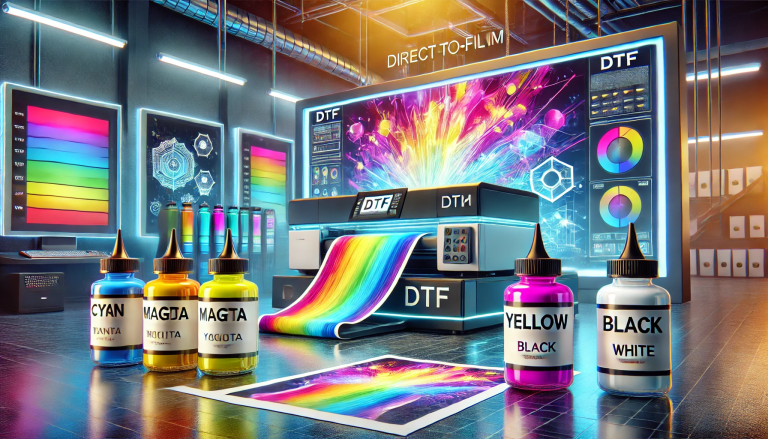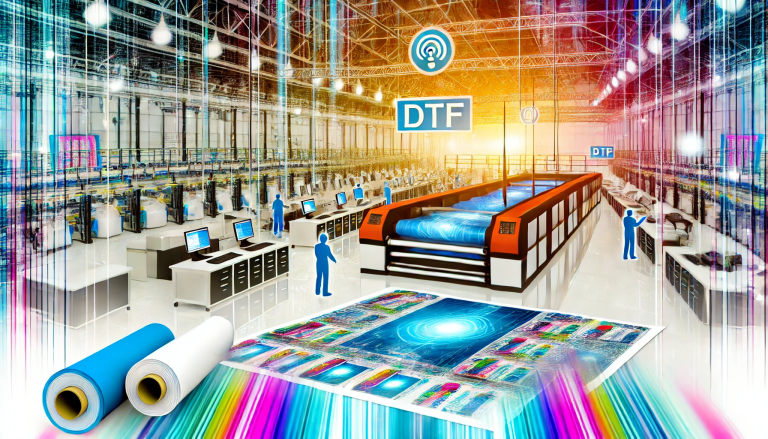“Assessing the Value of DTF Printers: Are They Worth the Investment?” -MAXDTF- DTF Transfer Film Roll Supplier, DTF Film sheets 13×19 Factory, Made in China
Introduction
In an industry filled with myriad printing technologies, Direct-to-Film (DTF) printers have created a buzz, redefining how graphics and designs are transferred to various substrates. However, given the significant investment, it’s critical to ask: Are DTF printers worth it? This article aims to provide an in-depth analysis of the benefits and considerations associated with DTF printers, how they stack up against other printing technologies, and finally, assess their overall value proposition.
Part 1: What are DTF Printers, and What Sets Them Apart?
DTF printers are specialized machines used in the DTF printing process. Unlike traditional printing methods, such as screen printing or direct-to-garment (DTG) printing, DTF printers print the design onto a special transfer film. This film is then treated with an adhesive powder and heat cured to create a transferable design. The design can be applied to a wide variety of materials using a heat press, creating a vibrant and durable print.
Several factors set DTF printers apart from other printing technologies. These include their ability to print complex, full-color designs with excellent detail, versatility in the variety of fabrics they can print on, and their relative cost-effectiveness for small runs or custom orders.
Part 2: Advantages of DTF Printers
There are numerous advantages to using DTF printers:
- Versatility: DTF printers can print on a variety of materials, including cotton, polyester, nylon, leather, and even non-porous materials like glass and metal. This flexibility opens up a broad range of applications, from clothing and home decor to promotional items and packaging.
- Quality: DTF printers are capable of producing high-resolution, full-color prints with excellent detail and vibrancy. Additionally, prints made using DTF printers are durable and can withstand multiple wash cycles without significant fading or wear.
- Cost-Effective for Small Runs: Unlike screen printing, which requires substantial setup time and costs, DTF printing allows for cost-effective small runs and custom orders. This feature makes it particularly suitable for businesses dealing with personalized items or small-batch production.
- Reduced Waste: Unlike DTG printing, DTF printing does not require pre-treatment of the fabric, resulting in less waste and a more eco-friendly printing process.
Part 3: Considerations and Challenges
While DTF printers offer numerous advantages, there are a few considerations to keep in mind:
- Initial Investment: DTF printers can be a substantial initial investment. Alongside the printer, businesses also need to account for the cost of consumables like ink, transfer film, adhesive powder, and maintenance supplies.
- Maintenance: DTF printers require regular maintenance to ensure they continue to function correctly and produce high-quality prints. This can include routine cleaning and occasional parts replacement.
- Learning Curve: There’s a learning curve associated with using DTF printers and mastering the process to consistently produce high-quality prints. Staff training can be a time and resource-intensive process.
Part 4: Are DTF Printers Worth It?
Considering the advantages and challenges, the value proposition of DTF printers largely depends on the specific needs of a business. For businesses looking to produce high-quality, full-color designs on a variety of materials, particularly in small runs or for custom orders, DTF printers can be a valuable investment.




